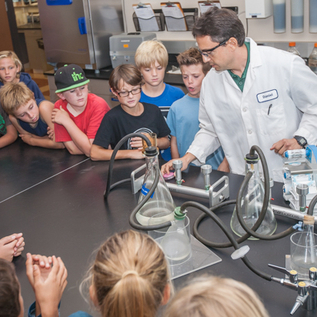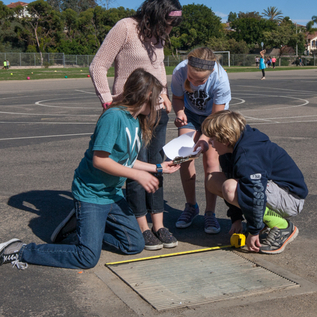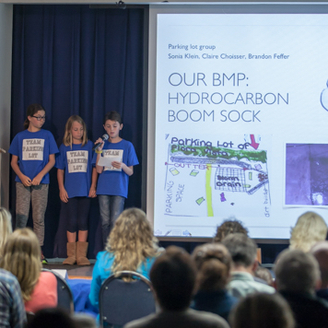This science-based program focused on storm water pollution prevention educates and guides student interns as they produce a plan to manage storm water pollution on their campus. The completed plans fulfill all requirements for an industrial Storm Water Pollution Prevention Plan (SWPPP) as required by the California Regional Water Quality Control Board.
- Meet the SWPPP team.
- Contact us.
- Read about SWPPP Interns in the News.
SWPPP Internship in Detail
The School YearDuring the school year, field trips and speakers many from various related fields add value and relevance to the work the students are doing in the classroom.
The school year is divided into three sections:
Each class works together in the formation of the SWPPP. To achieve greater individual hands on learning the class is divided into smaller groups. |
Research and EducationInterns start off with an overview of the watershed and how Storm Water runoff from the school campus is related. We study school site plans that include storm water pipes and catch basins. They then move into the cities storm water system and how it connects all the way to the ocean.
This first phase includes a field trip. The class boards a bus at school and then follows the storm water system infrastructure as it leads to the outfall. This includes a stop at a siltation basin (this helps bring in the understanding of our watershed). We proceed to where the outfall water discharges into the ocean and take samples there. The field trip ends at a testing lab where students will deliver the samples and learn how the water testing is conducted. |
Data Collection, Analysis & Plan FormationDuring this phase we gather data, including water sampling, and enter it into spreadsheets with charts.
Students gather water samples during the first rain event of the year. The samples are taken to the lab and tested. The lab results are discussed and added into each students data file. Monthly observations are conducted including before, during and after rain events. We observe various on-site drains, as well as the surface areas that are pollution sources. Also during the second phase local and state experts will be invited to make presentations regarding specific parts of the activities the students are studying. In this way the community at large can become invested in the student’s activities. |
Plan Completion, Implementation and ReportingIn this last section we design our BMPs and complete our SWPPP. BMPs from last year included non-structural: assemblies, signs, videos, letters to teachers and parents.
Easy and inexpensive structural BMPs were designed included screens, new drains, gutters, French drains, etc. Several comprehensive BMPs were designed including curb cuts, bio swales and removing impervious surfaces and replacing with pervious. The completed plan is presented to the Encinitas Union School District Board of Trustees. An important feature is to prepare students to present information to groups of people in order to foster positive change. This skill was practiced during the class and demonstrated during the presentation to the EUSD School Board. |





